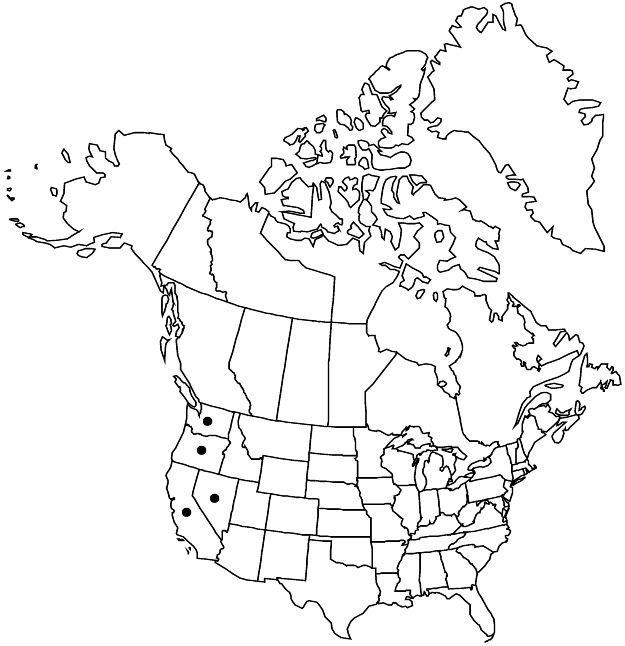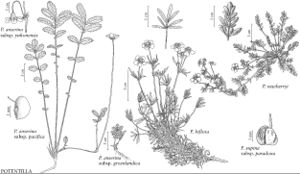Difference between revisions of "Potentilla newberryi"
Proc. Amer. Acad. Arts 6: 532. 1865.
FNA>Volume Importer |
FNA>Volume Importer |
(No difference)
| |
Revision as of 21:35, 24 September 2019
Basal leaves: petiole 1–3.5 cm, long hairs ± abundant, 0.5–1.5 mm, short hairs absent or sparse, rarely common; leaflets 0.2–1 cm, lobes oblanceolate to narrowly elliptic, (0.5–)1–2 mm wide, longs hairs ± abundant, short hairs absent or sparse, glands sparse to abundant. Flowers: epicalyx bractlets broadly lanceolate to elliptic, 1.5–4(–5) × (0.4–)0.8–1.3 mm; sepals 2–4(–5) mm, apex ± acute; petals (3–)4–6 × (2–)3–5 mm; filaments 1–2(–2.5) mm, anthers 0.4–0.6 mm; carpels 20–50. Achenes 0.9–1.2 mm.
Phenology: Flowering summer.
Habitat: Moist, sandy to clayey, more or less alkaline soil, especially where seasonally inundated near streams, ponds, and lakes
Elevation: 1300–1800 m
Distribution

Calif., Nev., Oreg., Wash.
Discussion
Potentilla newberryi grows in valley bottoms in south-central Oregon, northeastern California, and northwestern Nevada. The only specimen supposedly collected in south-central Washington (W. N. Suksdorf 2718, WTU) was gathered in 1898.
Selected References
None.
